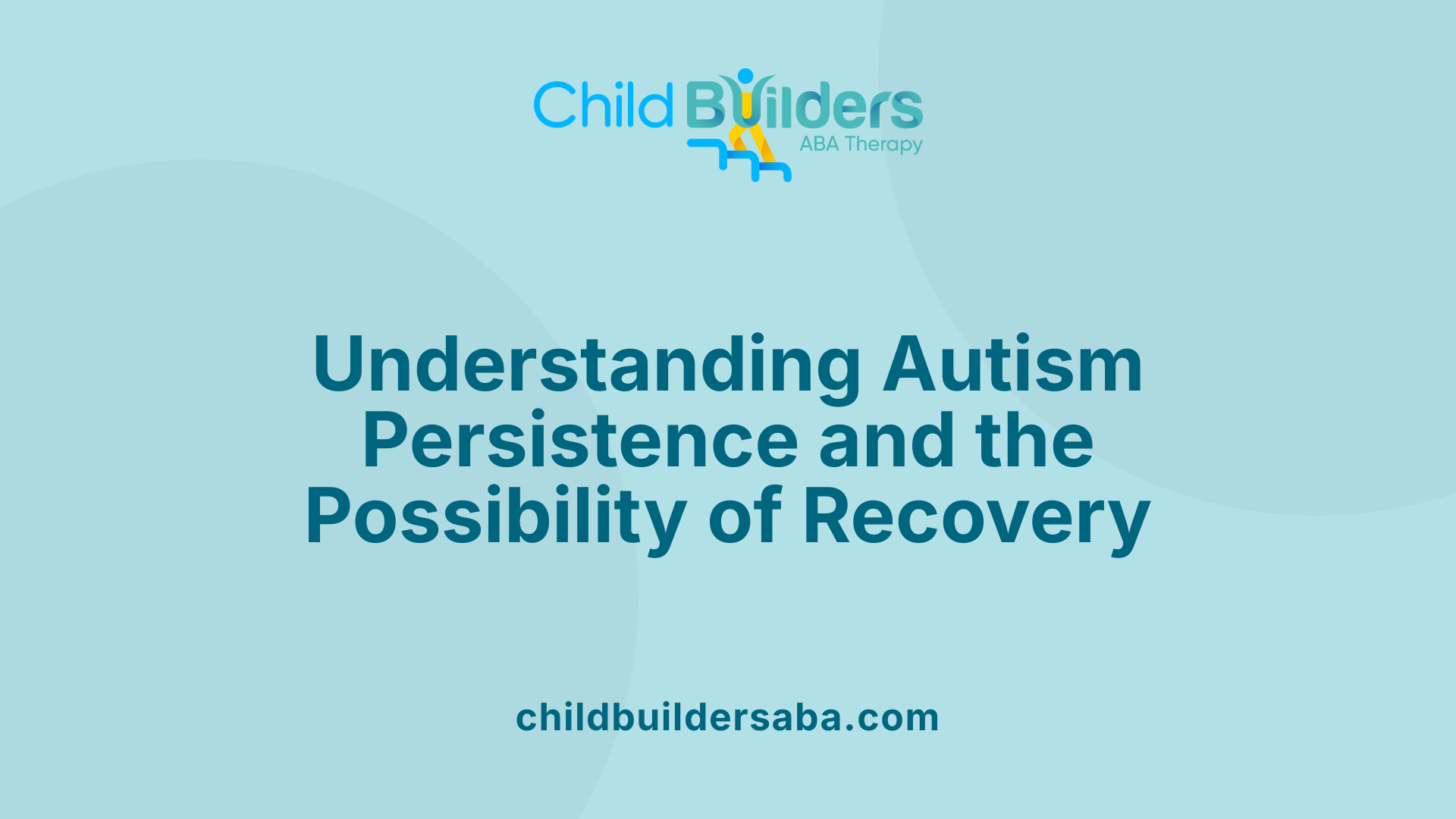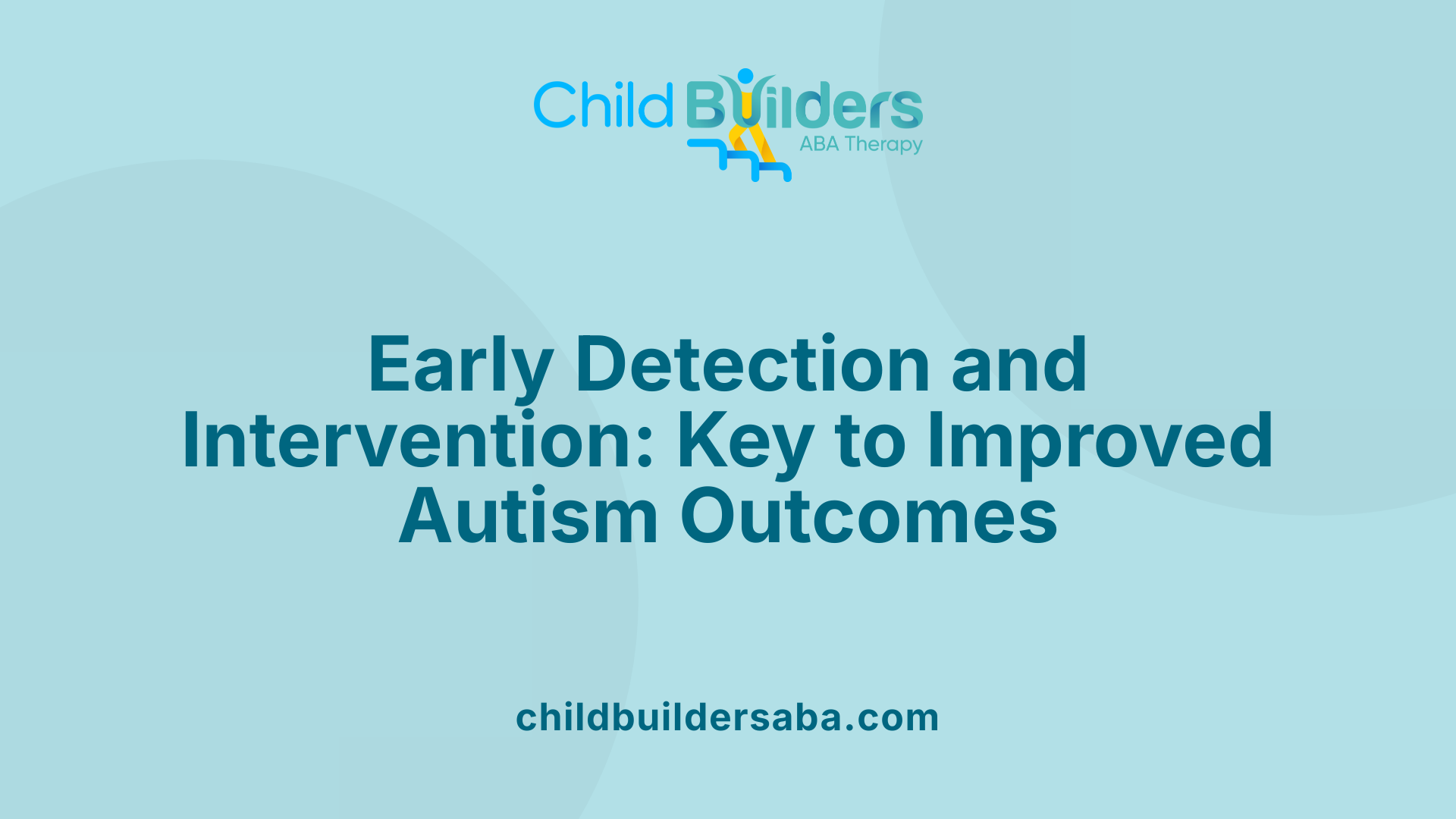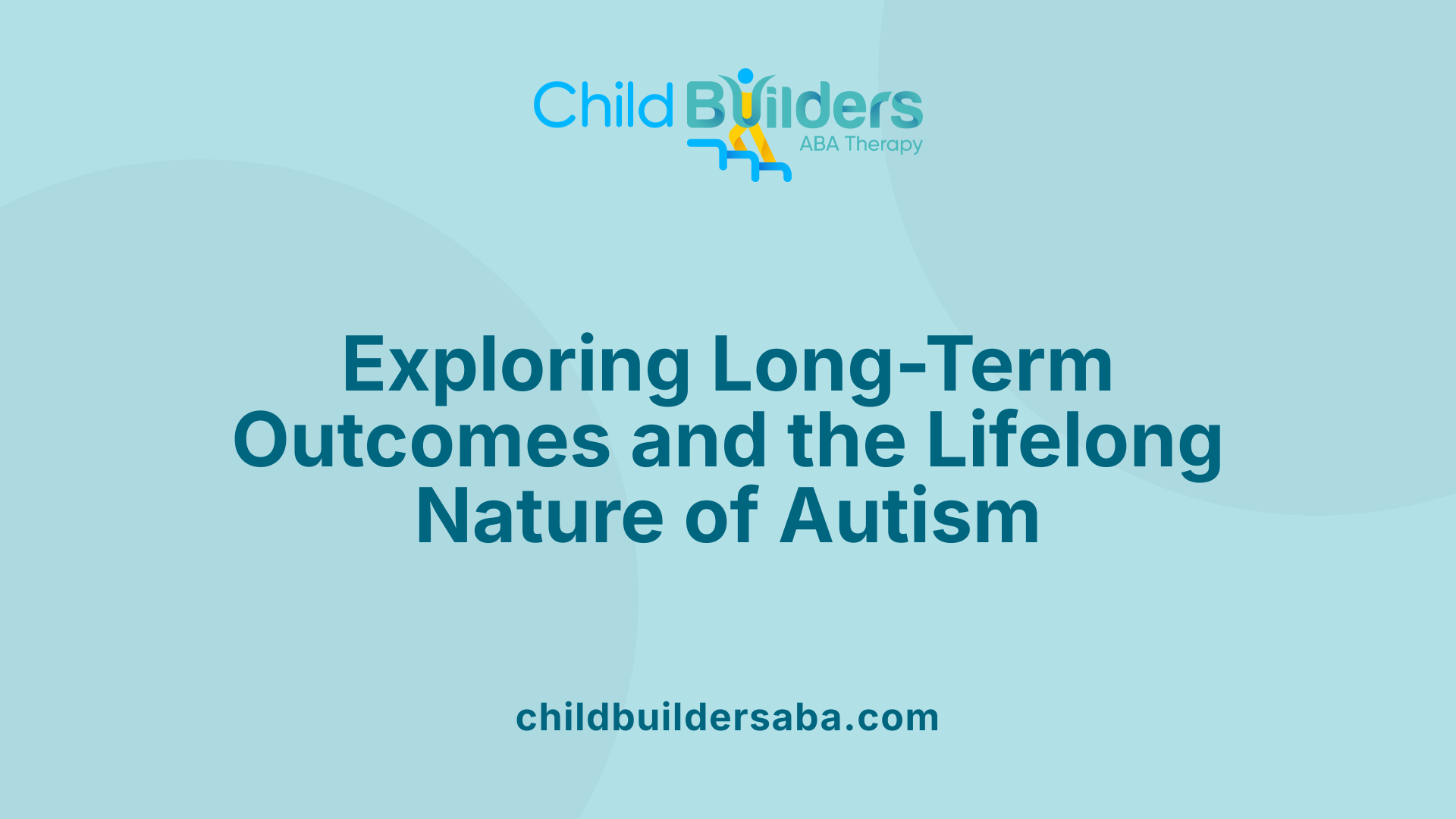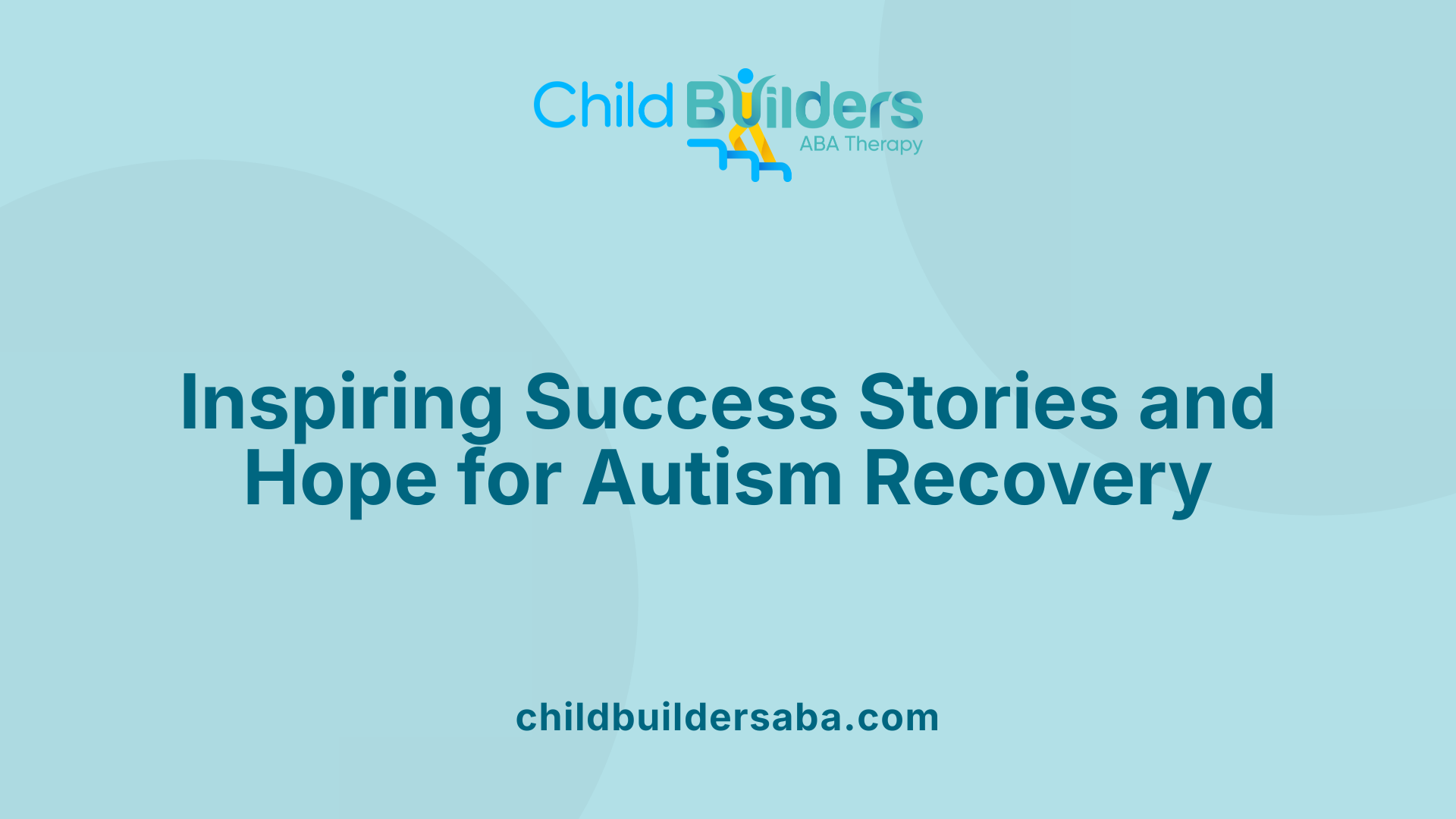Is It Possible To Recover From Autism?

Exploring Autism and the Question of Recovery
Autism Spectrum Disorder (ASD) is widely recognized as a lifelong neurodevelopmental condition. While there is currently no definitive cure that eliminates autism completely, research and clinical observations suggest that some individuals can experience significant symptom reduction or even remission. This article delves into the nuances of autism recovery, examining current evidence, predictors, interventions, and the realistic outlook for individuals and their families.
The Scope of Autism Persistence and Recovery Possibilities

Can autism go away with age?
Autism spectrum disorder (ASD) is considered a lifelong neurodevelopmental condition. Currently, there is no cure that makes autism completely disappear.
While some individuals diagnosed early and engaging in intense behavioral therapies, such as Applied Behavior Analysis (ABA), may show significant improvements, this does not mean they are cured. Often, they may lose the formal diagnosis and function well in daily life, but underlying neurodevelopmental differences typically still exist.
Improvements are usually the result of support systems, coping strategies, and therapies that help manage symptoms, rather than a natural resolution of autism itself.
Many people believe that autism can disappear with age; however, scientific evidence indicates otherwise. Instead, autism manifests differently over time, with some skills improving and others remaining stable.
Long-term studies show that while a small percentage of children no longer meet diagnostic criteria, most individuals continue to experience ongoing challenges. This understanding underscores that autism is generally a lifelong condition, but one that can be supported effectively to maximize independence and quality of life.
Statistics on diagnosis remission
Research suggests that between 3% and 25% of children with ASD eventually lose their diagnosis as they grow older. Notably, most of these children initially exhibit milder symptoms, receive early and intensive intervention, and often are diagnosed before 30 months of age.
A 2012 study found that about 4% of children in the U.S. lost their autism diagnosis by age 8. Other research reports similar figures, indicating that early diagnosis and intervention boost the chances of symptom improvement.
For example, a follow-up of 569 children diagnosed with autism found that 7% no longer met the criteria for ASD at follow-up. This group often had higher cognitive skills and milder initial symptoms.
Most children who no longer meet ASD criteria still face other developmental or behavioral challenges, such as language delays, learning disabilities, or mental health issues.
Role of early intervention and therapy
Early and intensive intervention plays a crucial role in improving outcomes. Treatments like behavioral therapy and communication therapies aim to develop social, communication, and daily living skills.
Children who start treatment before 30 months of age tend to have better prospects for symptom reduction. Interventions that focus on increasing verbal abilities, reducing repetitive behaviors, and enhancing social skills can sometimes lead to significant functional improvements.
Research, including early studies by Dr. Ivar Lovaas, indicated that up to half of young children treated with ABA may recover in terms of meeting the diagnostic criteria.
In summary, while autism is generally considered a lifelong condition, early diagnosis and comprehensive intervention can lead to substantial improvements. Some children, particularly those with milder symptoms and earlier intervention, can effectively no longer meet the diagnostic criteria, though residual challenges may persist.
Signs and Indicators of Autism Recovery in Children
What are the signs of autism recovery?
Recognizing recovery from autism involves observing several changes in a child's behavior and skills. Children who have 'recovered' typically show a significant decrease or disappearance of core autistic behaviors. These include repetitive actions, social interaction difficulties, and communication challenges.
One of the main indicators is improved language ability—children may develop spoken language or improve their receptive language skills, which allows better understanding of verbal cues. Additionally, children often display enhanced eye contact and become more actively engaged in social activities such as playing with peers or participating in conversations.
Another sign is increased adaptability to new routines or environments, indicating better social awareness and flexibility.
However, it's important to acknowledge that some children labeled as 'recovered' might still experience subtle neurodevelopmental issues, like attention deficits or anxiety. Many of these residual challenges do not necessarily prevent them from functioning well in daily life.
Early intervention, especially with behavioral therapies like Applied Behavior Analysis (ABA), greatly influences the likelihood of moving out of the autism spectrum. Children diagnosed at a younger age and with milder initial symptoms tend to have a better prognosis.
That said, even children who no longer meet ASD diagnostic criteria often require some ongoing support or monitoring. Some may experience a recurrence of symptoms or develop other neurodevelopmental conditions later, underscoring the importance of continued professional oversight.
Overall, recovery signs focus on improved social communication, reduced repetitive behaviors, and better adaptive skills, but a cautious approach remains essential since residual vulnerabilities can persist.
The Role of Early Diagnosis and Interventions in Outcomes

What is the recovery rate for mild autism?
Recovery rates among children with autism spectrum disorder (ASD) can vary significantly based on several factors, including the severity of symptoms, age at diagnosis, and the type and intensity of intervention.
Research indicates that between 3% and 25% of children diagnosed with ASD, especially those with milder symptoms, may eventually lose their diagnosis and develop within the normal range of cognitive, social, and adaptive skills. Studies involving large samples have documented that a small but notable percentage of children no longer meet the criteria for autism after receiving appropriate interventions.
Children diagnosed earlier, particularly before 30 months, and those with higher cognitive abilities and language skills have a better chance of recovery. Intensive behavioral therapies, especially Applied Behavior Analysis (ABA), have shown promising results. These approaches focus on promoting skill development, reducing interfering behaviors, and enriching social and communication opportunities.
The presence of residual challenges, such as higher-order communication deficits or co-morbidities like anxiety and depression, may persist even after diagnosis is no longer applicable. However, the overall outlook for some children with milder autism or those who respond well to early intervention is optimistic.
Ultimately, early diagnosis coupled with timely and targeted therapeutic support increases the likelihood of substantial developmental progress and, in some cases, remission of autistic symptoms.
Factors Influencing Autism Recovery: Predictors and Prognostics
What are the signs of autism recovery?
Recovery from autism spectrum disorder (ASD) can be characterized by a noticeable reduction or complete disappearance of core autistic behaviors. This includes a decrease in repetitive actions, improved social interactions, and enhanced communication skills. Children who no longer meet ASD diagnostic criteria often exhibit better eye contact, increased engagement in social activities, and more typical language development.
In some cases, children considered 'recovered' still face residual challenges like attention deficits or mild behavioral issues. Early detection and intervention, particularly in children with initially milder symptoms, significantly improve the chances of autism diagnosis loss. However, recovery does not mean the absence of all neurodevelopmental issues; ongoing support may still be necessary, and some children might develop other conditions later on. Overall, signs of recovery indicate a substantial improvement in functioning, though the extent and nature of residual difficulties can vary.
Contradictions and Rare Cases of Spontaneous Recovery
 There are documented instances where children with autism have experienced rapid, spontaneous remission, although such cases are exceedingly rare. One notable case involved a child diagnosed with severe autistic disorder who showed a remarkable disappearance of symptoms within just 13 days during hospitalization. This child's autism diagnosis was based on longstanding symptoms present over at least three years, with an early onset before age three and a high severity score. Despite poor prognostic indicators like low developmental quotient and lack of speech, the child's symptoms completely resolved without targeted intervention, and improvements persisted over time.
There are documented instances where children with autism have experienced rapid, spontaneous remission, although such cases are exceedingly rare. One notable case involved a child diagnosed with severe autistic disorder who showed a remarkable disappearance of symptoms within just 13 days during hospitalization. This child's autism diagnosis was based on longstanding symptoms present over at least three years, with an early onset before age three and a high severity score. Despite poor prognostic indicators like low developmental quotient and lack of speech, the child's symptoms completely resolved without targeted intervention, and improvements persisted over time.
Long-term follow-up studies reveal that while most children continue to meet ASD criteria into adolescence and adulthood, a small percentage—ranging from 3% to 25%—no longer qualify for the diagnosis after early intervention, particularly if diagnosed early and with milder initial symptoms. For example, a significant study reviewed 569 children diagnosed between 2003 and 2013, finding that around 7% no longer met ASD criteria at follow-up, with many also improving in cognitive and social skills.
However, such spontaneous recoveries are difficult to explain and predict. The mechanisms might include the normalization of input through environmental enrichment, reinforcement of social skills, reduction of interfering behaviors, and addressing underlying stress or health issues like sleep or nutrition. Despite these rare success stories, current research emphasizes that complete remission is uncommon, and many children require ongoing support.
Recent advances and controlled behavioral studies highlight that intensive therapies, especially those based on Applied Behavior Analysis (ABA), can lead to meaningful improvements. Yet, it’s critical to understand that recovery from autism remains a rare outcome, and most individuals continue to face challenges that require lifelong management. While these cases offer hope and demonstrate the potential for change, they also underscore the importance of early detection and intervention to optimize developmental outcomes.
For more information on spontaneous remission in autism and rare recovery cases, a search with the phrase "spontaneous remission in autism rare cases" can provide additional insights into these extraordinary but uncommon occurrences.
Research on Recovery and Long-Term Outcomes

What is the typical recovery rate for moderate autism?
Research estimates that between 3% and 25% of children diagnosed with autism spectrum disorder (ASD) may eventually lose their diagnosis and function within the typical range of cognitive, social, and adaptive skills. Among these, studies focusing on moderate autism suggest that about 4% to 13% of children experience significant improvements, sometimes enough to no longer meet diagnostic criteria.
Early diagnosis and intervention play a crucial role in these outcomes. Children diagnosed before 30 months of age, especially those with milder symptoms and higher IQs, tend to respond better to treatments like Applied Behavior Analysis (ABA). These early interventions target developing social, communication, and behavioral skills, which can lead to notable progress.
While complete recovery remains uncommon — with many children still managing residual communication and social challenges — some show extraordinary improvement. In particular, children with less severe initial symptoms and those who received intensive and specialized therapies have higher chances of reversing or eliminating their autism diagnosis.
Long-term follow-up studies reveal that most individuals with ASD experience some level of symptom reduction over time. However, partial social and communication difficulties often persist, requiring ongoing support. The possibility of achieving full recovery emphasizes the importance of early detection and tailored treatment plans, although it is essential to recognize that many individuals thrive despite remaining symptoms.
Personal Experiences, Success Stories, and the Potential for Hope
 There are documented cases of individuals with autism who have achieved remarkable recoveries, providing hope for families and caregivers. One well-known example is a child diagnosed with severe autistic disorder who showed rapid and spontaneous remission within just 13 days during hospitalization. Despite having poor prognosis indicators such as low developmental scores and no speech, this child's autism symptoms completely disappeared and their progress was maintained over the long term. Such cases are rare but demonstrate that recovery is possible, even under severe conditions.
There are documented cases of individuals with autism who have achieved remarkable recoveries, providing hope for families and caregivers. One well-known example is a child diagnosed with severe autistic disorder who showed rapid and spontaneous remission within just 13 days during hospitalization. Despite having poor prognosis indicators such as low developmental scores and no speech, this child's autism symptoms completely disappeared and their progress was maintained over the long term. Such cases are rare but demonstrate that recovery is possible, even under severe conditions.
Research studies also support these hopeful stories. For example, a review of clinical cases found that about 3% to 25% of children with autism can lose their diagnosis, particularly if diagnosed early and given intensive behavioral interventions like Applied Behavior Analysis (ABA). Early diagnosis often correlates with better outcomes, as children diagnosed before age 30 months tend to respond more positively to treatment.
Beyond individual cases, many personal stories shared by parents highlight substantial progress in social, verbal, and adaptive skills. Some children, who initially struggled with communication and repetitive behaviors, show significant improvement following therapies, dietary changes, and behavioral supports. These improvements can lead to increased independence and better integration into mainstream environments.
The impact of different interventions appears noteworthy. Controlled studies have demonstrated that behavioral techniques can result in meaningful recovery or significant reduction of symptoms. While treatments like ABA are most supported by research, some children benefit from additional approaches such as speech, occupational, and family therapy. Importantly, no cure currently exists for autism, but early and tailored intervention can help many improve their skills and quality of life.
Although these success stories are inspiring, they remind us that recovery is complex and not guaranteed for every individual. Continued research and tailored support remain essential. Overall, these stories emphasize that with early intervention, personalized support, and sometimes a bit of luck, children with autism may overcome many challenges and thrive in their communities.
Support Options and Managing Expectations
What is the typical recovery rate for moderate autism?
Research indicates that between 3% and 25% of children with autism can lose their diagnosis and function within the normal range of cognitive, social, and adaptive skills. Most notably, controlled behavioral studies—especially those applying intensive behavioral techniques like ABA—have documented significant improvements, with some children no longer meeting the criteria for ASD.
A 2012 U.S. study found that roughly 4% of children outgrew their autism diagnosis by age 8, and other long-term research suggests even higher percentages, particularly among children diagnosed early, before age 30 months. Recovery tends to be more common in children with milder initial symptoms, higher IQ levels, and those who received early intervention.
Many children who lose their diagnosis often had concurrent developmental or language delays, but with targeted therapies, they develop skills comparable to their typically developing peers. Importantly, while some children show remarkable progress, residual difficulties—like higher-order communication tasks, attention issues, and co-morbid conditions such as tics or anxiety—may persist.
Overall, the likelihood of recovery is influenced by initial severity, age of diagnosis, and the comprehensiveness of intervention. Though total remission remains rare, early and intensive support can substantially improve life outcomes for many children with autism.
Looking Forward: The Evolving Landscape of Autism Support
While autism remains a lifelong condition for many, ongoing research, early intervention, and supportive therapies offer hope for significant improvement in symptoms and functioning. Individual experiences vary widely, and while some may no longer meet diagnostic criteria, others will continue to require support throughout life. The evolving understanding emphasizes tailored approaches, realistic expectations, and the importance of both scientific evidence and personal hope in navigating autism's complexities. Ultimately, the focus should be on enabling individuals to lead fulfilling, independent lives as much as possible, regardless of diagnostic status.
References
- Can children with autism recover? If so, how? - PubMed
- Rapid and spontaneous recovery in autistic disorder - PMC
- How Often Do Children Lose An Autism Diagnosis?
- Autism spectrum disorder - Diagnosis and treatment - Mayo Clinic
- Treatments that are not recommended for autism - NHS
- Is Autism Recovery Possible? - Dr. Mary Barbera
- Is It Possible to Recover from Autism? - Scientific American



.jpg)

































































































